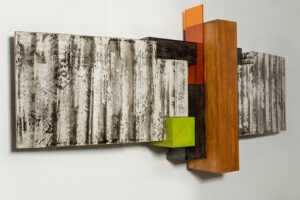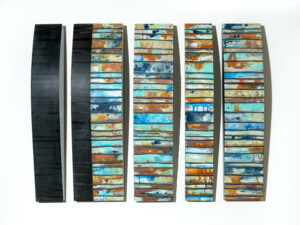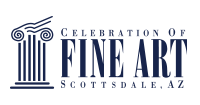Troy Axelrod brings a unique perspective to art that not many can claim––a nearly three-decade history as a professional architect. One look at his dossier of work, however, and it’s easy to see the profession’s influences.
He seems to see the world through a series of simple forms and geometries that can be thoughtfully manipulated to create a space. He also sees the unbridled beauty in raw, natural elements like cement––materials he developed an appreciation for as an architect––which he incorporates into his pieces.
While he approaches his artwork in a similar fashion as an architectural design––through a series of sketches and models––art gives him the opportunity to bring his concepts to fruition through the deftness of his own hands versus a computer modeling program.
Of course, architecture is still near and dear to Troy’s heart, and he continues to practice, but creating art provides him a novel outlet for expression that he’s intrigued to explore.
Read on to learn more about Troy and what he’s planning to unveil at the Celebration of Fine Art this year.



How long have you been creating artwork?
I have been creating quasi-artwork for the last several years. For the most part, these have simply been ideas that come to my mind and interest me but have always remained a bit fragmented. It wasn’t until the last couple of years that I began exploring and refining these ideas and transferring them into model form to develop them further.
Has your art always been in this architectonic sculpture style or did you experiment with other types of art before finding your voice?
Based on my background, I have learned to convey my thoughts and ideas through sketching but have never pursued it as a finished product––more of a means to an end. I depend on sketching, as well as models, to document and navigate the development process of creating and refining final sculptural components.
My pieces, for the most part, have always been architectonic in nature. Over the last year or so, I have refined and simplified things. Though still a bit architectural in nature, I am experimenting with various canvas shapes and configurations and incorporating the arch element into the canvas itself rather than using it as an ordering element within the piece itself.
How has your background in architecture influenced your work?
Architecture is essentially the manipulation of forms or elements to create space. It has taught me how to arrange simple forms and geometries and apply the same principles when creating my pieces. It has allowed me to develop an artistic style/aesthetic that blends well with my structured personality.
My background in architecture has also given me an appreciation for the unique character of natural and raw materials––particularly cement and the challenges of manipulating it into a refined medium. This material has its own unique and unpredictable DNA that will always produce a varied visual result with every pour. No one piece will be the same. The product itself, in a way, determines or contributes to what it will ultimately become.
What is the most rewarding thing about your work?
Ultimately, the final product––pulling together the culmination of ideas into a single piece and remembering that it started as a rudimentary study sketch or model. It is so gratifying to see the progression of development and refinement, and that it was accomplished by hand, not by a computer as I am accustomed to in my profession.
What is the most challenging?
There are a couple. There’s the uncertainty of a new piece and trying to adapt my approach to architectural design to translate into a smaller sculptural scale, marrying shapes and forms so that they visually compete with or complement each other.
Along with this, understanding the characteristics of cement as a medium and not as a building product can be challenging at times. Every pour and chemical reaction is different. Learning how to mitigate that for a desired effect can be interesting.
Has your work evolved over the years?
In the last year, I have simplified many of my pieces, choosing to use the arch shape as my signature element. These arch forms are grouped together and intended to be seen as a single overall canvas. All of the pieces and their unconventional proportions are different sizes and depths. This is an attempt to create negative space and shadows between, thus giving the piece a three-dimensional quality.
Is there a particular piece you’re excited to introduce at the Celebration of Fine Art?
I have expanded on my “Puzzled” series and adapted this cement paper design technique to some of my arched canvas templates and I’m thrilled with the outcome––very simple, yet very bold. Between the unconventional canvas shapes and the bold patterning, I think they will be very well received.
What drew you to the Celebration of Fine Art?
Simply, the clientele, exposure and reputation that it has. I gained some insight and familiarity with the show last year, as I had a partial display wall in Kathleen Hope’s booth and the reception to my work was very positive.

